Are you sourcing the right components for your spray sunscreen formulations? Explore the details of spray sunscreen ingredients with us.
With years of experience and research in the cosmetic industry, our insights provide clear understanding in a world full of information. Trust us to guide you through the elements of skincare formulations.
The intricate blend of the 9 essential ingredients in spray sunscreen not only ensures broad-spectrum protection but also contributes to the overall skin health and experience.
Before diving deep, here’s a glimpse of the top 2 vital ingredients that play a fundamental role in sun protection:
- Mineral Filters
- Chemical Filters
To grasp the full picture of what goes into these sun-protective sprays, read on.
1. Mineral Filters
Mineral filters, often termed physical sunscreens, act as a protective shield by reflecting and scattering UV radiation away from the skin, unlike chemical filters that absorb UV rays. Here are some of the most commonly utilized minerals:
Zinc Oxide
Zinc oxide, a natural mineral, is known for how it can protect the skin from both UVA and UVB rays from the sun. It works like a shield on the top layer of the skin, bouncing off the harmful sunlight. Plus, it’s good for sensitive or acne-prone skin because it won’t clog the pores and is unlikely to cause allergies.
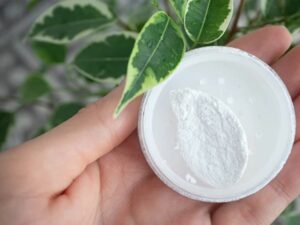
Titanium Dioxide
Titanium dioxide is another mineral-based ingredient commonly used in sunscreens. Like zinc oxide, it offers protection by reflecting and scattering UV radiation. However, its primary strength lies in guarding against UVB rays, and when combined with other filters, it keeps the skin safe from all kinds of sun rays. Thus, making it an effective and gentle choice for those with sensitive skin or allergies to chemical sunscreens.
2. Chemical Filters
Chemical filters function by absorbing UV rays and converting them into harmless heat. Unlike mineral filters, they use a chemical reaction to protect the skin from the sun’s harmful effects. Here are some prominent chemical filters:
Avobenzone
Avobenzone is a key ingredient known for its strong UVA protection abilities. It effectively absorbs the sun’s harmful rays, preventing them from penetrating the skin, helping to prevent skin damage that can lead to premature aging and skin cancer. Its stability can sometimes be a consideration, leading to combinations with other ingredients to maximize its effectiveness.

Octisalate
Octisalate is primarily recognized for absorbing UVB rays. This ingredient boosts the sunscreen’s SPF rating, making the product more effective against sunburn. It’s known for its quick absorption, ensuring that sunscreen doesn’t leave a greasy residue. Nako Cosmetic incorporates Octisalate into its sunscreens to provide reliable protection and a comfortable, non-greasy feel.
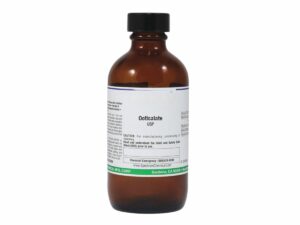
Octocrylene
Octocrylene is beneficial for protecting against both UVB and short-wave UVA rays. Besides offering sun protection, it improves the stability of other UV filters, like avobenzone. Plus, its water-resistant properties make sunscreens ideal for activities like swimming.
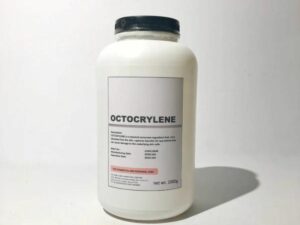
Homosalate
Homosalate specializes in absorbing UVB rays, which are responsible for sunburn. By doing so, it aids in preventing top layer skin damage. Its non-greasy nature ensures that sunscreens feel light and comfortable on the skin. For instance, lots of daily facial moisturizers get their light feel and good sun protection from using homosalate.
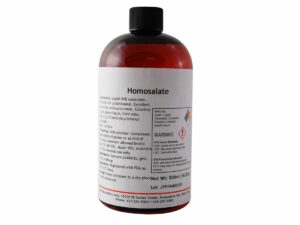
Oxybenzone
Oxybenzone is versatile, providing protection from both UVA and UVB rays. This chemical agent is highly valued in the cosmetic industry because it offers strong protection, preventing the skin from the adverse effects of prolonged sun exposure. Its effectiveness makes it a key in many sunscreen formulations, ensuring skin remains shielded under the sun.
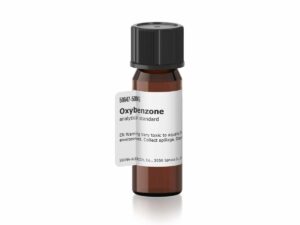
3. Emollients
Emollients are agents that soften and smooth the skin by sealing in moisture. They form a protective layer on the skin’s surface, helping to prevent water loss and combat dryness. Common in many skincare formulations, emollients enhance product texture and ensure a silky application. Here are notable emollients:
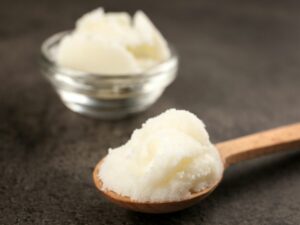
Dimethicone
Dimethicone is a type of silicone, known for its unique texture and protective abilities. It forms a light, breathable barrier on the skin, sealing in moisture without clogging pores. Its inclusion in products often contributes to a silky, smooth application. Nako Cosmetic harnesses the power of Dimethicone in its product line, increasing the luxurious feel and hydrating benefits.
Cetyl Alcohol
Contrary to its name, cetyl alcohol isn’t the drying kind of alcohol. It’s a fatty alcohol derived from natural sources like coconut or palm oil. Used as an emollient and thickener in cosmetics, it helps to condition the skin and maintain the consistency of products.
Beeswax
Beeswax is a natural substance produced by honeybees. It acts as an emollient, forming a protective layer on the skin which locks in moisture and protects against environmental factors. In cosmetic formulations, it also provides structure and stability.
4. Humectants
Humectants are vital skincare ingredients that help in bringing moisture from the air and keep it in the skin. They play a crucial role in maintaining skin hydration, ensuring it remains soft and radiant. Here are common humectants:
Glycerin
Glycerin, often derived from plants, is a clear and sticky liquid. It has a unique ability to draw moisture from the air and lock it into the skin. This makes it a favorite in skincare products, ensuring skin remains soft and hydrated. For instance, glycerin is often found in moisturizing creams and lotions.

Propylene Glycol
Propylene Glycol is a synthetic compound often used in cosmetics. It acts as a humectant, meaning it helps retain moisture in the skin. Its versatile nature also allows it to improve product texture, making creams and lotions smoother.

5. Emulsifiers
Emulsifiers help in ensuring a harmonious blend of ingredients so that they don’t separate. These agents maintain product consistency, ensuring a smooth texture and application. Their function is vital in achieving the desired performance and appearance of various skincare and cosmetic products. Here are some of its types:
Sorbitan Olivate
Sorbitan Olivate is a natural compound often derived from olive oil. It acts as an emulsifier, helping to mix water and oils together in cosmetic formulas. This ingredient not only ensures a smooth consistency in products but also offers moisturizing benefits to the skin.

Lecithin
Lecithin is a fatty substance that can be sourced from egg yolks or plants like soybeans. In cosmetics, it serves a dual purpose: aiding in product spreadability and acting as a hydrating agent. Its natural origin makes it a popular choice for many skincare formulations.

6. Preservatives
Preservatives ensure products remain safe and effective over time. They stop bacteria from growing, which keeps the product fresh and safe to use. By extending product shelf life, they maintain the integrity and efficacy of the product’s active ingredients. Titanium dioxide in makeup acts as a pigment and provides sun protection, enhancing the product’s appeal and functionality. Here are some commonly used:
Phenoxyethanol
Phenoxyethanol is a common preservative used in cosmetics and personal care products. It helps prevent the growth of bacteria and fungi, ensuring that products remain safe and effective for longer. It’s often chosen for its versatility and compatibility with a wide range of ingredients.

Parabens
Parabens are a group of synthetic compounds that act as preservatives in many cosmetic formulations. They protect products from mold, bacteria, and yeast, prolonging their shelf life. Their role is vital in maintaining the efficacy of sunscreens over time, preventing degradation and spoilage. Their inclusion guarantees that consumers can use the product over extended periods without compromising on its protective properties.
7. Stabilizers
Stabilizers guarantee consistency, strength, and longevity of the product. By preventing damage from external factors like light or air, they ensure that the product maintains ingredient integrity and delivers consistent performance throughout its shelf life. Here are the notable ones used:
Vitamin E (Tocopherol)
Vitamin E, also known as Tocopherol, is a strong antioxidant. It helps defend the skin against damage from environmental threats, such as pollution and UV rays. Additionally, it supports skin hydration and promotes overall skin health.
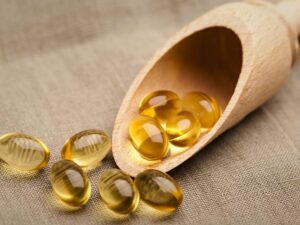
Ethylhexyl Methoxycrylene
Ethylhexyl Methoxycrylene is a stabilizing agent often found in sunscreens. Its primary role is to enhance the performance and longevity of other UV filters. By doing so, it ensures that sunscreens provide consistent and prolonged protection against harmful rays.
8. Propellants
Propellants are substances that make products powerfully released in a specific form, usually as a spray. They help make sure that the contents are evenly distributed, making the product work better. For spray sunscreens, they play a crucial role in ensuring consistent and easy application. Here are common ones used:
| Aspect |
Information |
| Propellant Types |
Common propellant types used in sunscreen cosmetics include hydrocarbons (propane, butane), nitrogen gas, carbon dioxide, compressed air, and isobutane. Manufacturers may choose one or a combination of these propellants based on specific requirements. |
| Role in Formulation |
Propellants in sunscreen cosmetics are primarily used for dispensing the product as an aerosol spray. They help propel the sunscreen formula out of the container in a fine mist, facilitating even and convenient application. |
| Flammability |
Hydrocarbon-based propellants (e.g., propane, butane, isobutane) are flammable and pose a fire hazard if not handled properly. Non-flammable options like nitrogen and carbon dioxide are available as safer alternatives. |
| Compatibility with Ingredients |
Propellants should be compatible with the sunscreen ingredients to avoid chemical reactions or degradation of the formula. Some propellants may interact with certain active ingredients, leading to product instability. |
| Sensitivity to Temperature |
The sensitivity of propellants to temperature can affect the stability of the sunscreen product. For instance, some propellants may be sensitive to extreme heat or cold, potentially leading to changes in product performance. |
| Environmental Impact |
Considerations about the environmental impact of propellants are crucial. Propellants like hydrocarbons and isobutane may contribute to greenhouse gas emissions, while options like nitrogen and carbon dioxide are more environmentally friendly. |
| Regulatory Compliance |
Formulators must ensure that the selected propellants comply with relevant regulations and safety standards set by authorities such as the FDA (U.S. Food and Drug Administration) and the EPA (U.S. Environmental Protection Agency). |
| Safety Precautions |
Manufacturers must implement safety measures in handling and storing flammable propellants, including using explosion-proof equipment, maintaining proper ventilation, and complying with safety regulations. |
| Packaging |
The choice of packaging, such as aerosol cans or pump dispensers, is influenced by the type of propellant used. The packaging design should accommodate the specific requirements of the chosen propellant. |
| Consumer Experience |
Propellants impact the user experience, affecting factors like spray pattern, ease of application, and product dispersion. A well-chosen propellant contributes to a pleasant application process. |
| Cost Considerations |
The cost of procuring and using propellants can vary widely. Factors influencing cost include the type of propellant, regulatory compliance, and the complexity of the delivery system. |
Hydrofluorocarbon 152a
Hydrofluorocarbon 152a, which is often shortened to HFC-152a, is a propellant commonly used in aerosol products. It’s favored for its ability to produce a fine, even mist when products are sprayed. Environmentally, it’s thought to be not as bad as other substances like chlorofluorocarbons (CFCs) and doesn’t harm the ozone layer as much.
Propane
Propane, when used in spray sunscreens, functions primarily as a propellant, ensuring that the sunscreen is dispensed evenly and with precision. Its role is paramount in guaranteeing that every spray provides a consistent and even coat on the skin, maximizing protection. By facilitating a uniform application, propane contributes to the overall efficacy of the sunscreen product.
9. Additional Additives
Additional additives in cosmetics are supplementary ingredients incorporated to enhance product performance, appearance, or stability. They can range from fragrances that provide a pleasing scent to stabilizers that ensure the product’s longevity and efficacy. Here are the popular ones utilized:
Fragrance
Fragrances in sunscreens are primarily used to provide a pleasant scent, making the application process more enjoyable for users. They mask any potentially off-putting odors from other ingredients, ensuring that the product appeals to the senses. Additionally, fragrances can bring about feelings of freshness, relaxation, or luxury, enhancing the overall product experience.
Aloe Vera Extract
Aloe vera extract is celebrated for its soothing and hydrating properties. When incorporated in sunscreens, it can help relieve skin discomfort caused by sun exposure, such as redness or dryness. Furthermore, aloe vera’s natural cooling effect offers immediate relief to sun-stressed skin, making it a valuable addition to sun protection formulas.
Dive Deeper Into Our Resources
Looking for more diverse product options? Browse through our handpicked selections:
Still haven’t found what you’re looking for? Don’t hesitate to contact us. We’re available around the clock to assist you.
Conclusion
After examining the components of spray sunscreens, it’s evident that these ingredients play a harmonious role in safeguarding the skin. This guide offers a comprehensive overview, emphasizing each component’s essence, ensuring transparency and quality in product development and selection for brands.
If you are looking for expertise in cosmetic formulations and ingredient analysis to elevate your products, Nako Cosmetic is the destination. For further insights, reach out today and explore deeper with us.












